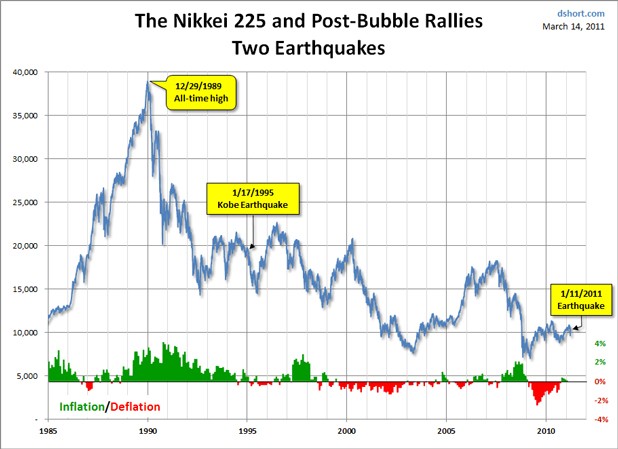About NIKKEI 225
Post on: 5 Июнь, 2015 No Comment

About NIKKEI Stock Average
The NIKKEI Stock Average is Japan’s widely watched index of stock market activity and has been calculated continuously since September 7, 1950. (Before that date, the Tokyo Stock Exchange calculated the Tokyo Stock Exchange Adjusted Average Stock Price, so index-based measurement of the market actually goes back to May 16, 1949).
The current calculation method, called the Dow Jones method, has been used since 1950. The 225 components of the NIKKEI Stock Average are among the most actively traded issues on the first section of the TSE. The index reflects the ex-rights-adjusted average stock price.
Since the NIKKEI Stock Average is expected to represent the performance of stocks on the first section – and by extension the market in general – the mix of components has been rebalanced from time to time to assure that all issues in the index are both highly liquid and representative of Japan’s industrial structure.
The previous round of rule changes governing deletion and addition of components took place in October 1991. The revisions mandated replacement of issues whose trading volumes had declined considerably with high liquidity alternatives, with all an eye to maintaining a lanced representation by the various industrial sectors. Japan’s economic and industrial environment has changed rapidly over the past 10 years and activity in the stock market has reflected this.
In recent years, the pace of change has accelerated. Notably, an entirely new industry has emerged around information technology (IT). During this period of change, Japan has been suffering through a protracted recession characterized by sluggish capital investment and weak consumer spending.
The circumstances have resulted in a situation where lines are being clearly drawn between winners and losers, and these corporate strength differentials are driving a wave of mergers and acquisitions. A state of bi-polarization has thus come to shape the stock market.
In response to these, Nikkei in October 1993 introduced the Nikkei 300 (Nikkei Stock Average of 300 Selected Issues), a weighted average based on market capitalization of 300 components stocks. This was followed in June 1998 by the launch of Nikkei Style Indexes (Value and Growth), which was created to recognize diversification in asset management styles.
The Nikkei Stock Average has now come to play a much larger role than simply measuring the market level and reflecting trends. Use of the average as a base for futures and other index-linked derivatives, for example, is just one of a growing range of applications.
It was these changes in the industrial and investment environments that necessitated revisions to the rules covering selection (addition and deletion) of index components. The goal was to assure continuity of the basic philosophy of using “225 Selected Issues” to accurately represent Japan’s economic conditions.
Nikkei’s Calculation Method:
The Nikkei Stock Average is the average price of 225 stocks traded on the first section of the Tokyo Stock Exchange, but it is different from a simple average in that the divisor is adjusted to maintain continuity and reduce the effects of external factors not directly related to the market.
Equation:
a) Stocks that do not have a par value of 50 yen are converted to 50 yen par value.
b) Numbers are rounded to two digits after the decimal point, or hundrethds, to calculate the average.
c) Priority in the usage of prices are:
- Current Special Quotation (closing special quotation).
- Current Price (Closing Price)
- Standard Price, which is defined as the theoretical price of ex-rights, a special quotation from the previous day or the closing from the previous day, in this order of priority.
Adjustment of Divisors
When components change or when they are affected by changes outside of the market, the divisor is adjusted to keep the index level consistent.














